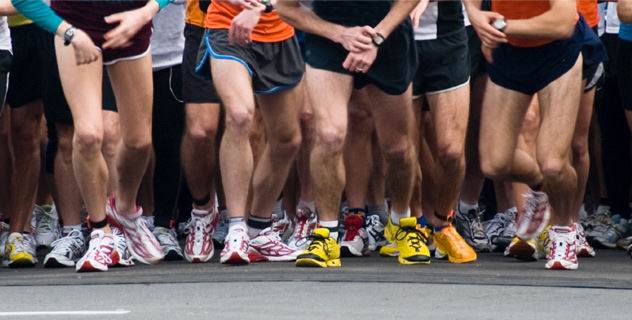Sports

High impact sports such as basketball, soccer, running, football, cricket and really any sport that involves using your feet can lead to injuries that will require specialist treatment.
It is easy to injure your feet while playing sport as the forces between your feet and the ground are amplified during high impact activity.
Sports Injuries
Overuse syndromes are common occurrences in sport and include injuries sustained from repeated action such as long distance running, as opposed to acute injuries which occur in an instant such as a sprained ankle. Your individual biomechanics will have an effect on the likelihood of certain injuries. Prevalent sports injuries include shin splints, runner knee, Achilles tendonitis and stress fractures. Sports people may also complain of thickened nails that can sometimes become ingrown or get bruises under the nail from repetitive trauma.
Treatment
Treatment for sports podiatric injuries involves a biomechanics assessment to look at your posture, strength, flexibility and movement, and an analysis of how the movement of your feet affects your lower limbs. Evaluation of sports shoes, stretches, strengthening exercises, application of various physical therapies and the fitting of orthotics are methods your podiatrist may use to address your particular injury.
Choosing the Right Shoes for Sport
Shoes must have sufficient room at the toe, we recommend a minimum of 2cm and not compress the sides of the feet in a way that causes friction and potentially lead to sores or corns.
Identify the primary activity that will be performed in the shoes and select accordingly - different kinds of exercise require different kinds of shoes.
Traditional running shoes are designed to absorb forces, which can be between 3 adn 4 times your body weight. Lightweight mesh materials can ensure that the upper parts of the shoe are breathable and doesn't stretch or distort with exercise. Some runners are now choosing 'low profile' or 'barefoot' running shoes, however these do not offer the same support or cushioning as a traditional sports shoe. If you are choosing this type of running shoe, you may need to adjust your running technique to avoid injury.
Shoes for general athletic or aerobic activities can have features that help control biomechanical problems. Your podiatrist can help advise you about the correct shoe for your preferred sporting activity and foot type.
In general you should aim for sturdy heel support, good arch and appropriate cushioning.
Wear and Tear
Athletic shoes should be immediately comfortable and not require breaking in. An average athletic should last 1000kms, although this will be influenced by your body weight and the surface you run on. You'll need to replace your shoe when it becomes distorted from constant wear or the mid sole has become compressed and is not able to absorb the forces of impact.
Find a Podiatrist
If you are concerned about your feet and lower leg health, click on 'Find a Podiatrist' and the 'Sport' interest field and you will find appropriate podiatrists in your area.
To 'Find a Podiatrist' please click here.
